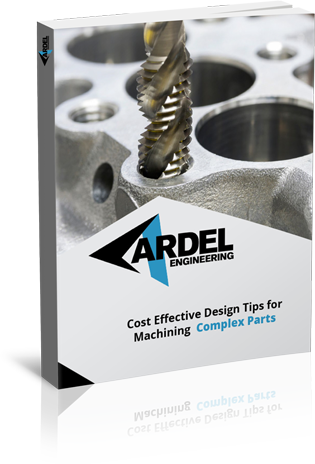The first milling machines were based on the practice of rotary filing. A process which evolved in countless machine shops around the world, rotary filing reduced the time and energy previously spent on hand-filing by placing a circular cutter lined with teeth in a lathe’s headstock.
Roughly 200 years ago, the first tools solely dedicated to the milling machine process appeared in the shops of American craftsmen. Since then, the process of milling has advanced to the point of computerized control.
What is CNC Milling?
CNC milling is a machining process that utilizes computerized controls to manage the movement and operation of multi-point rotary cutting tools. As the tools rotate and move across the surface of the workpiece, they slowly remove excess material to achieve the desired shape and size.
The CNC milling process can be broken up into four distinct stages:
- CAD model design: engineers create a 2D or 3D design of the desired part
- CAD model conversion to a CNC program: the design is exported into a compatible file format and converted into machine instructions using CAM software
- CNC milling machine setup: the machine operator prepares the machine and workpiece
- Milling operation execution: the machine operator initiates the machining program
The systems used in CNC milling operations are known as CNC milling machines. They can have a moving workpiece and a stationary rotary tool, a stationary workpiece and a moving rotary tool, or a moving workpiece and rotary tool, depending on their design and the milling requirements. As CNC milling generally serves as a secondary or finishing process for machined components, milling machines can be used to create design elements such as flat surfaces, contours, grooves, slots, notches, holes, and pockets.
CNC milling accommodates a variety of materials, including metals, plastics, ceramics, and other engineered materials, making it easy for manufacturers to choose a material that suits their exact needs. This material flexibility benefits a number of industries, including, but not limited to, the following:
- Aerospace and aircraft
- Automotive
- Commercial
- Electronics
- Industrial and OEM
- Maintenance
- Medical
- Technology and security
- Telecommunications
- Transportation
The CNC Machine Working Process
CNC, or Computer Numerical Control, places tools under the direct guidance of a computerized operating system.
Successful, high-quality milling is a combination of three elements:
1. A cutter with many teeth and ideal sharpness for a material2. Spinning a tool at high enough speed to process a material correctly
3. An appropriate feed rate for advancing the chosen material through the process
CNC allows for extremely close control of these elements. The computerized systems read design information directly from an engineer’s drawings or models, eliminating possibilities for error between design and production.
The CNC milling process takes directions in customized software codes such as NC code, G-code, and ISO code, all converted straight from a project’s CAM or CAD designs. The codes are then translated into the machine’s controls, which run along at least two axes (X and Y), in addition to the tool spindle running in the depth, or Z, axis. Some machining centers allow for controls on up to five unique axes.
Want to Learn More About CNC Milling?
For more information on precision machining processes, contact the experts at Ardel today. You can also click on one of the informational links below:



